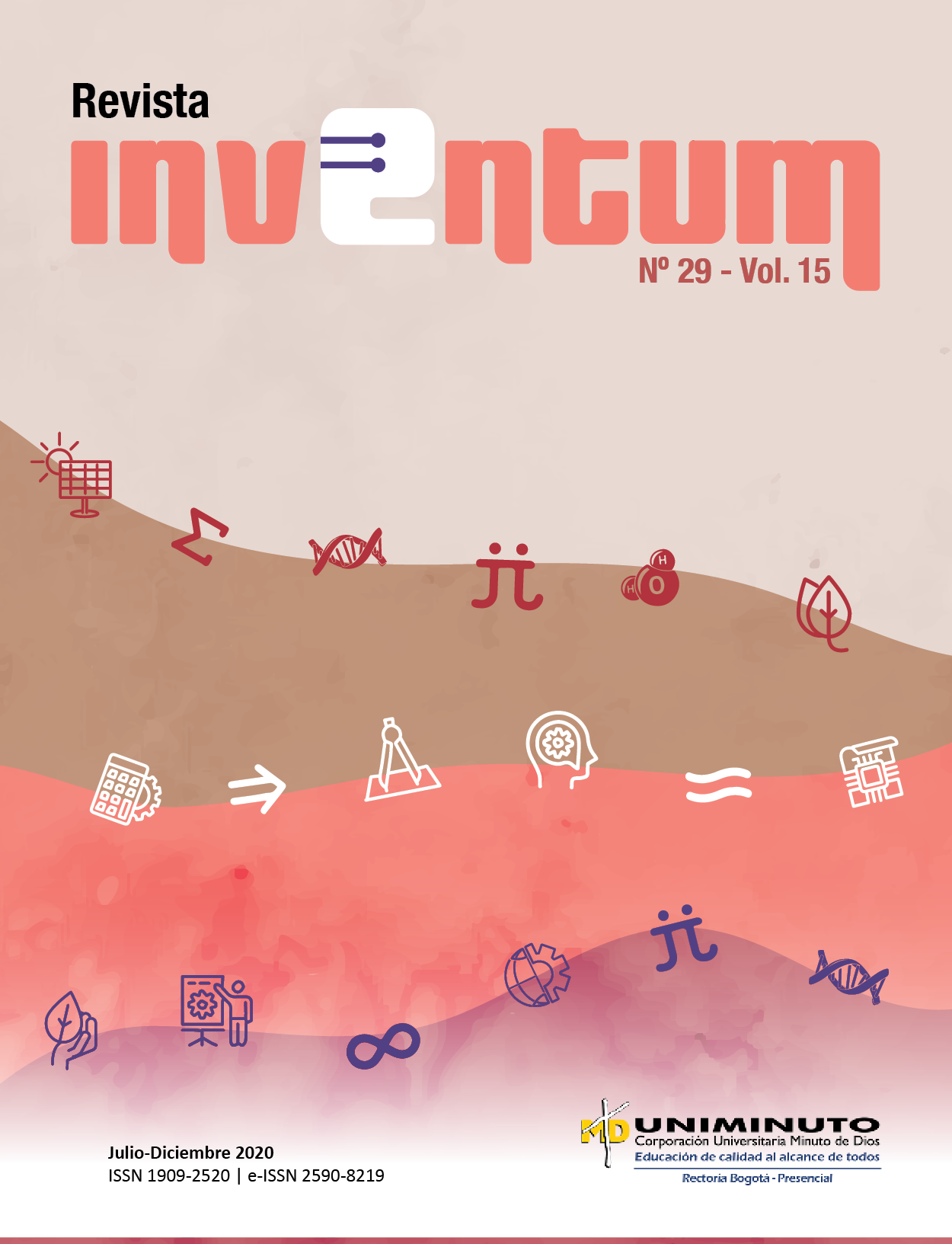Propuesta para maximizar la recarga de agua subterránea con la siembra de maderables en la finca La Aurora en Guamal, Meta
Barra lateral del artículo
Cómo citar
Altmetrics
Detalles del artículo
Se solicita a los autores que diligencien el documento de cesión de derechos de autor sobre el artículo, para que sea posible su edición, publicación y distribución en cualquier medio y modalidad: medios electrónicos, CD ROM, impresos o cualquier otra forma, con fines exclusivamente científicos, educativos y culturales
- La obra pertenece a UNIMINUTO.
- Dada la naturaleza de UNIMINUTO como Institución de Educación Superior, con un modelo universitario innovador para ofrecer Educación de alta calidad, de fácil acceso, integral y flexible; para formar profesionales altamente competentes, éticamente responsables y líderes de procesos de transformación social, EL CEDENTE ha decidido ceder los derechos patrimoniales de su OBRA, que adelante se detalla para que sea explotado por ésta
- El querer de EL CEDENTE es ceder a título gratuito los derechos patrimoniales de la OBRA a UNIMINUTO con fines académicos.
Contenido principal del artículo
Resumen
En una cuenca hidrográfica el conocimiento del movimiento del agua específico permite llevar a cabo una planeación y ordenamiento territorial. El objetivo del presente trabajo es la extracción de datos climatológicos
de la zona en donde se ubica la finca de trabajo y por consiguiente la realización de un montaje basado en plataformas aptas para la reubicación, identificación y operación del almacenamiento hídrico de Guamal,
Meta. Debido a esto, fue necesario identificar los factores biológicos y antropogénicos de la finca, dado que generan alteraciones patológicas, desbordamientos e inundaciones que alteran el uso de la cuenca hídrica
elegida. De modo que con la información recopilada del SIG (Sistema de Información Geográfica) se dio inicio al diseño hidrológico, con el empleo de programas informáticos tales como Qgis y Python para denotar
el montaje de un reservorio de agua lluvia en el territorio anteriormente mencionado. Por otro lado, a partir de la realización de cálculos matemáticos y adjunción de datos consultados en el Ideam (Instituto de
Hidrología, Meteorología y Estudios Ambientales), se determinó, a partir del método de Thornthwaite, que la capacidad de recarga acuífera que tendrá la zona destinada para el establecimiento del embalse es de
984.88 mm/año, el cual será correctamente aprovechado para nuevos proyectos que necesiten de la reserva de este recurso hídrico.
Referencias
Ventana”. Revista de la Facultad de Ciencias Agrarias-Universidad Nacional de Cuyo, vol. 34, no. 1, pp. 21-28, 2007.
[2] A. Velázquez, A. Torres y G. Bocco (comps.), Las enseñanzas de San Juan. Investigación participativa para el manejo integral de recursos naturales. México, Semarnat, Instituto Nacional de Ecología, México, 2004.
[3] J. Sánchez, G. Bocco, J. Fuentes y A. Velázquez, Análisis de cobertura y uso del terreno en el contexto de su dinámica espaciotemporal. México, Instituto Nacional de Ecología, 2003.
[4] M. Aguayo, A. Pauchard, G. Azocar y O. Parra, “Cambio de uso del suelo en el centro sur de Chile a fines del siglo XX. Entendiendo la dinámica espacial y temporal del paisaje”, Revista Chilena de Historia Natural,
no. 82, pp. 361-374, 2009.
[5] F. López Cadenas de Llano, Restauración hidrológico forestal de cuencas y control de la erosión. Madrid, Ed. Tragsa. Madrid, 1998.
[6] J. C. González, La gestión del riesgo de desastres en las inundaciones de Colombia: Una mirada crítica. Bogotá, Universidad Católica de Colombia, 2014.
[7] G. Poveda y O. J. Mesa, “Efectos hidrológicos de la deforestación”, Energética, no. 16, pp. 91-102.
[8] Instituto de Hidrología, Meteorología y Estudios Ambientales (Ideam), “Sistema de monitoreo de bosques y carbono. Detección temprana de deforestación”. Boletín 21, Cuarto trimestre,2019.
[9] E. Corredor, J. Fonseca y E. Páez, “Los servicios ecosistémicos de regulación: tendencias e impacto en el bienestar humano”, Revista de Investigación Agraria y Ambiental, vol. 3, no. 1, pp. 77-83, 2012.
[10] G. A. Forero, “La madera Colombiana, oportunidad de regeneración del flujo de los ríos mediante una producción sostenible y competitiva,” Rev. Tecnol., vol. 15, no. 2, 2017. doi: 10.18270/rt.v15i2.2179.
[11] G. A. Forero, J. C. Ramírez y G. A. Ramírez, “Propuesta de almacenamiento de agua lluvia para suministrarla al municipio de Albán utilizando HEC-GeoHMS”, Av. Investig. en Ing., vol. 17, no. 1, pp. 1–25, 2020. doi:
10.18041/1794-4953/avances.1.6031.
[12] G. A. Forero, “Dimensionamiento de canales y embalses para conducir y almacenar agua lluvia para abastecer la población de Altos de Cazucá (Soacha-Colombia) utilizando D.E.M.”, Rev. Tecnol., vol. 16, no. 1, p. 113.
2018. doi: 10.18270/rt.v16i1.2320.
[13] L.W. Mays, Water Resources Engineering 3rd Edition. Arizona, Wiley, 2019.
[14] G. A. Forero, “Dimensionamiento de embalses para fincas en Colombia usando como herramienta los modelos de elevación digital”, Rev. Tecnol., vol. 15, no. 1, pp. 129-138. 2017. doi: 10.18270/rt.v15i1.2044.





